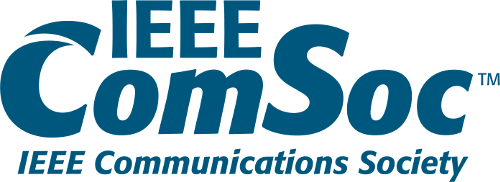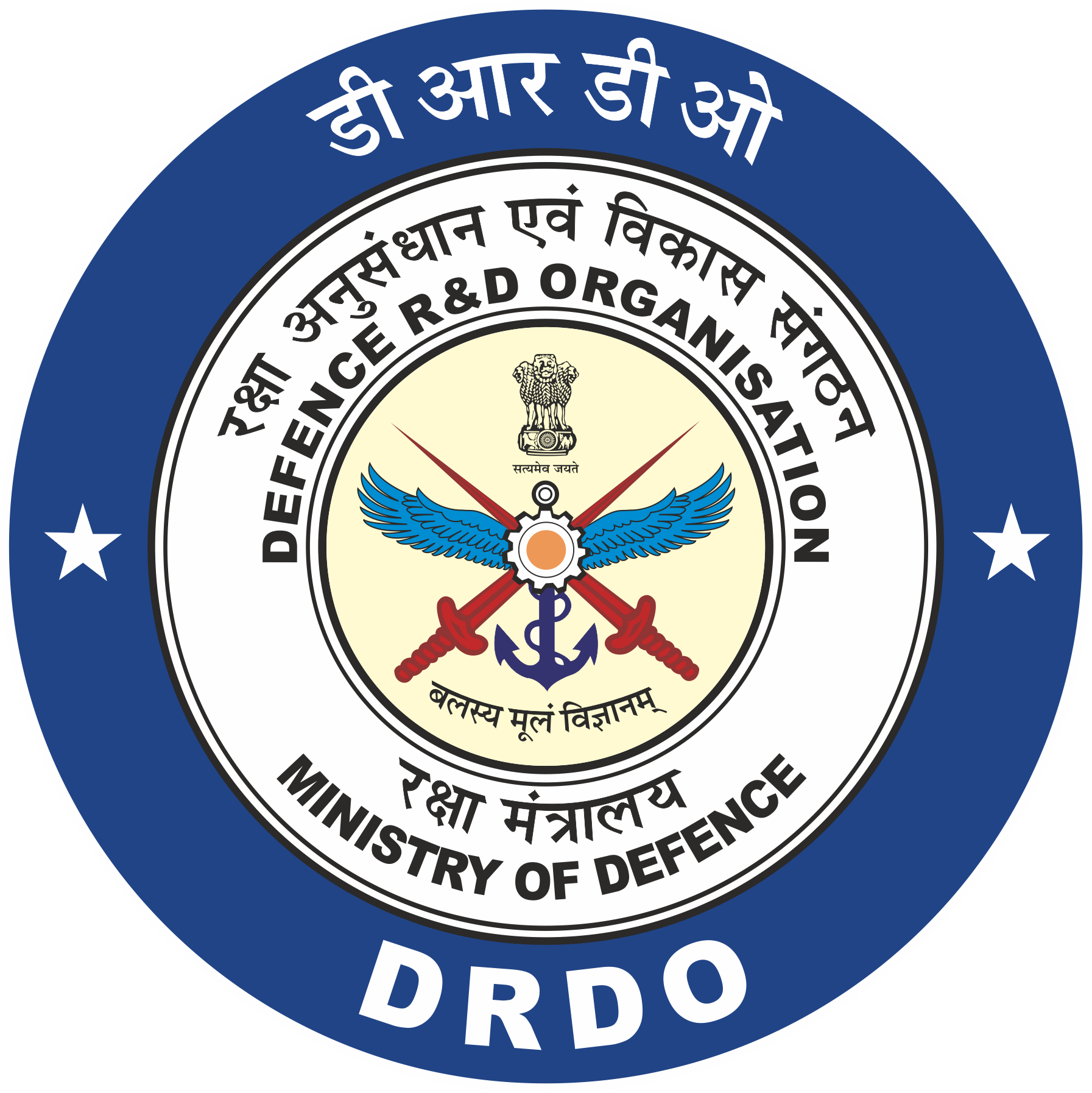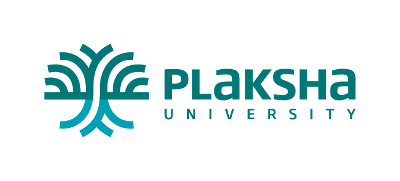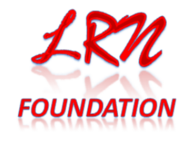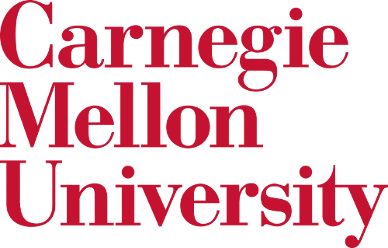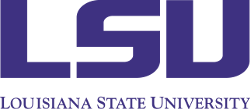Demos & Exhibits
Message from Demo Co-Chairs
The 14th International Conference on COMmunication Systems and NETworkS (COMSNETS) will be held in Bangalore, India, from January 3 - 8, 2022. COMSNETS is a premier international conference dedicated to advances in Networking and Communications Systems. This conference is an annual event for a world-class gathering of researchers from academia, industry, practitioners, and business leaders, providing a forum for discussing cutting edge research, and directions for new and timely innovative business and technology.
COMSNETS 2022 invites demos from researchers, startups, and corporates showcasing cutting-edge technologies and their applications. The topics of interest include, but are not limited to, the following:
- Machine Learning and AI in Networking
- 5G and Beyond wireless broadband networks
- Technologies for 6-100 GHz spectrum
- Visible light communications
- Heterogeneous networks (HetNets)
- Cognitive radio & white-space networking
- Economics of networks
- Energy-efficient communications
- Edge and Fog computing
- Connected unmanned aerial/terrestrial/underwater/underground systems
- CubeSats/satellite Networking
- Long-range/Low-power wide-area wireless networking
- Cloud computing
- Enterprise, data center, & storage-area networks
- Internet architecture and protocols, Internet science & emergent behavior
- Mobility and location management
- Mobile sensing
- Traffic analysis and engineering
- Internet of Things (IoT)
- Caching & content delivery systems
- Information/Content centric networks (ICN)
- Network management and operations
- Network security and privacy
- Trusted computing
- Network science
- Online social networks
- SDN/NFV and Network Programmability
- Internet Measurement and Modeling
- Networks for smarter energy & sustainability
- Vehicular Networks & Intelligent Transportation
- Smart Grid communications & networking
- Big Data/IoT Analytics in Networking
- Blockchain and Distributed Ledger
Every selected demo will be exhibited and given ample time for audience interactions. Corporate and research demos will have the option of longer demos. Due to the uncertainties caused by the COVID-19 pandemic, COMSNETS will allow authors of accepted papers to present and participate remotely if they wish to do so.
Dedicated Demo Sessions
Continuing on the positive experience from last year, this year as well we are going to have additional dedicated demo sessions without any simultaneous paper sessions, thus allowing the entire attending community to visit the demo booths.
Why should you submit a Demo or Exhibit?
COMSNETS is one of the premier conferences in its domain held every year in India. This is a unique opportunity to showcase your technologies and applications to international audiences at large, that is helping build the next generation of innovative technologies. To ensure you get the most out of the event we have the following planned:
- Interactions with expert panels
- Showcase to industry partners, potential recruits and potential investors
- Media coverage during the event
- Wider outreach as part of conference proceedings
Best Demo Awards
The COMSNETS 2022 Demo committee will review all submissions to select the accepted demos. All accepted demos will be considered for the Best Demo Award under different categories including startups. A committee will decide the winner on-site after evaluating all demo presentations.
What to submit?
Submission Categories
There are following two different submission categories i.e. research demo, and product demonstrations.
Research Demo: Research prototype with novel and clear technical contributions are invited. Authors of accepted full papers are highly encouraged to submit original demo entries.
A maximum of 3-pages extended abstract of the demo that captures motivation for the problem, the solution approach, results (if any), and a brief description of the technology demonstration. The abstract should use the same template as for the main conference paper submission. Abstracts that do not adhere to the conference template will be rejected without review. All submissions must be in PDF format.
All the submitted entries will go through a peer-review process. Accepted and presented submissions in this category will be published in the conference proceedings and submitted to Abstracting and Indexing (A&I) databases.
Start-ups and Product Demos: Proposals (maximum of 3 pages) to showcase products from startups and industries are invited in this category. Submissions in this category will require a proposal outlining the motivation and the technology/use case that will be demoed. All the sponsoring organizations are encouraged to submit an entry in this category.
How to Submit
Please make your submissions through EDAS submission portal.
Camera-Ready Instructions
- Camera-ready versions of the documents are needed only for Research Demos.
- Camera-ready instructions are at https://www.comsnets.org/camera_ready.html. The page limit for demo submissions is a minimum of 1 page and a maximum of 3 pages.
- The authors of the accepted papers should submit the camera-ready paper and the copyright transfer through the EDAS site strictly for their respective demos.
Default Setup (In-Person| 5 th Jan 2022, 1 PM to 3:30 PM IST |Venue: Indian Affairs)
The following default setup will be available for each demo (there might be minor last minute changes):
- A single 6 x 2.5 ft. table.
- Extension power cable/multi-point (the organizers would highly appreciate if suitable power adapters are brought by the participants. India uses a 220V/5A power supply with Indian power sockets though in some cases the power sockets might allow for US style power plugs).
- A single easel for displaying any related poster that must be of size 4x3ft landscape mode.
Default Setup (For remote participation| 6 th Jan 2022 (4 PM to 6:30 PM IST| Venue: Airmeet (Virtual platform) & Sigma 2 (For those who are available in-person during conference)
All registered authors are suggested to join through virtual platform i.e. Airmeet. A detailed instruction on how to join the platform and navigate is available here along with some videos. https://www.comsnets.org/virtual_attendee_instructions.html
Important Dates:
| Event date - In-person | 5th Jan 2022 (1:00 PM-3:30 PM IST) |
| Event date - Virtual | 6 th Jan 2022 (4:00 PM-6:30 PM IST) |
Lightning Talks
Each accepted demo will be given 1 minute on the main stage to advertise their demos to the larger audience.
Accepted Demos
Research Demos
As optimally accurate Maximum-likelihood (ML) decoding is NP-complete in code-length, all existing decoders are code-specific and so restricted in code-rate and code-length. Guessing Random Additive Noise Decoding (GRAND) is a recently introduced theoretically universal decoder suitable for all moderate redundancy codes, as required for ultra-reliable low-latency communication by the 5G New Radio Standard. Here we demonstrate the first-integrated universal GRAND chip in 40nm CMOS technology. It efficiently decodes all binary linear codes of any rate from 0.66 to 1 with code length up to 128 bits. For a bit-flip probability of 10^-5, GRAND chip measurements show that it achieves 1 µs latency at 68 MHz. Dynamic clock gating leveraging noise statistics reduces the average power dissipation to 3.75 mW at 1.1 V consuming 30.6 pJ/decoded bit of energy with a throughput of 122.6 Mb/s. The chip allows seamless swapping between codebooks with no downtime, enabling use by multiple applications simultaneously.
Arslan Riaz (Boston University, USA); Muriel Médard (MIT, USA); Ken R. Duffy (Hamilton Institute, Maynooth University, Ireland); Rabia T Yazicigil (Boston University, USA)
The telecommunications industry is undergoing a fundamental transformation with the advent of 5G and edge computing. The stringent requirements on performance, agility, and scalability, together with technologies such as network slicing that permit deploying multiple virtual networks on the same physical network infrastructure, is fostering the adoption of cloud-native or containerized network functions on open platforms such as Kubernetes. Operators are seeking to improve operational efficiency and deliver innovative high quality services to their customers at low cost. This demonstration will showcase zero-touch provisioning and closed-loop orchestration of network slices with the aid of AI-based operational analytics for anomaly detection, root-cause analysis and automated remediation.
Priyanka Naik (IBM Research-India, India); Chander Govindarajan and Seep Goel (IBM Research - India, India); Kavya Govindarajan and Dushyant Behl (IBM Research, India); Amandeep Singh (IBM Texas United States, USA); Matthew Thomas (unknown); Utpal Mangla (IBM Consulting, Canada); Praveen Jayachandran (IBM India, India)
Many networking applications (e.g., monitoring, anomaly detection, hardware design and testing) rely on packet header traces to inform their designs and configurations. Given the scarcity of real-world traces, various alternatives have been used to generate synthetic packet header traces via simulations, emulations, and machine learning models. Unfortunately, existing generation tools do not meet the desired fidelity on distributional metrics and downstream applications, and/or are incapable of supporting a wide spectrum of fidelity metrics. In this work, we build on the recent success of Generative Adversarial Networks (GANs) to automatically learn generative models for high-dimensional datasets with minimal human effort and explore their feasibility to synthesize packet header traces. We identify key challenges in directly using existing GAN architectures and toolkits for generating packet header traces and identify design choices to tackle each of these challenges. Building on these insights, we develop an end-to-end toolkit, PcapShare which is publicly available through https://www.pcapshare.com.
Yucheng Yin, Zinan Lin and Minhao Jin (Carnegie Mellon University, USA); Giulia Fanti (Carnegie Melone, USA); Vyas Sekar (Carnegie Mellon University, USA)
With the increase in footprint and offered services of the cellular services, as well as the advent of utilitarian applications for sensing requiring high bandwidth, a need to share the spectrum between wireless communications and radar applications has been envisaged. Several paradigms have been proposed to ensure co-existence of the two radio-frequency applications. An approach is to resort to the cognitive paradigm and opportunistically use the spectrum. In this context, we build and demonstrate the performance of a MIMO (Multiple Input Multiple Output) cognitive radar coexisting with communications. Letting the communication service to be incumbent, the radar uses an intelligent spectrum sensing and adapts its transmission strategy based on the decision of the spectrum sensing module in real time; the decision of the sensing module is based on the dual objectives of limited interference to communications (out of band emissions) while maintaining radar performance. The cognitive radar set-up is built using USRPs while the LTE Application from National Instruments is used for emulating a communication link. The real time adaptation of the radar to changes in spectrum utilisation and improvement in performance of radar/ communications with the proposed coexistence scheme will be de demonstrated.
Mohammad Alaee-Kerahroodi (Interdisciplinary Center for Security, Reliability and Trust, Université du Luxembourg, Luxembourg); Bhavani Shankar Mysore R (Interdisciplinary Centre for Security, Reliability and Trust & University of Luxembourg, Luxembourg)
Efficient and reliable public transportation system has the potential to ease traffic congestion and improve overall transportation system performance. Out of the various measures for improving the public transportation performance, bus priority at signalized intersection has the maximum potential to reduce bus travel times in urban areas. This study develops a complete solution for bus priority based on the objective of the total person delay reduction at signalized intersections under the heterogeneous and lane undisciplined Indian traffic.
Shalu R (Centre for Development of Advanced Computing, Thiruvananthapuram, India); Lijo Thomas (Centre for Development of Advanced Computing, India); Jerry Daniel J (Centre for Development of Advanced Computing, Thiruvananthapuram, India); Lelitha Vanajakshi and Bhargava Chilukuri (IIT Madras, India)
Tele-operated robots are gaining industrial traction for remote inspection and operation in hazardous environments. While the tele-operated robots may have autonomous loops, they must support closed-loop control commands from human operators. This research demonstration aims to develop a realistic digital twin of the remote inspection environment capturing robots, network transmission, and machine learning models in order to study the complex interactions between these components. Along with this, it provides guidelines for performance tuning over the digital twin in order to optimally use robotic, compute, and network resources. The study of the performance of this digital twin relies on various network parameters, size of data transferred, robot speed and other hyper-parameters of machine learning model. This could be used to derive specific values for each of them in order to trade-off deployment accuracy and efficiency.
Partiksha Partiksha (Indian Institute of Technology, Goa, India); Ajay Kattepur (Ericsson Research, India)
We demonstrate SAE level 4 tele-driving operation for an electric vehicle capable of stopping itself in case of system failure over a captive LTE network deployed in a university campus. Our electronically controlled vehicle is driven remotely by a operator from a control room which receives the multi-camera real-time video feed from the vehicle over this network. Our primary contribution includes the responsive emergency braking mechanism for the vehicle, modular vehicle design based on CAN bus, low latency LTE MAC scheduler design, and modifications to popular video tool FFMPEG to support low latency real time video streaming. Our demonstration shows complete integration of the different components, i.e., the vehicle, the LTE network and the remote driving application. Another salient feature of our system is the O-RAN compliant RAN awareness module and KPI (Key Performance Indicator) application which enables real-time network performance monitoring.
Ashish Joglekar (Robert Bosch Center for Cyberphysical Systems, India); Alok Rawat, Ashwin Colaco and Aswin Prasad (IISc, India); Praphulla Ranjan (RBCCPS, India); GD Raghava (Indian Institute of Science, Bangalore, India); Rajat Chopra (Indian Institute of Science, Bengaluru, India); Bharadwaj Amrutur (Indian Institute of Science, India); Bharath Govindraju and Fashid Rahman (ARTPARK, India); Himanshu Tyagi (Indian Institute of Science, India); Naveen Arulselvan (Indian Institute of Science, India & Artpark, India); Preetam Patil (Indian Institute of Science, India); Anand Svr (Indian Institute of Science Bangalore, India); Vishal Sevani (Indian Institute of Science, India)
In this work, we design a low-cost, low-weight, portable, land Robot for Soil Quality Sensing, hereby referred to as RoSS. In this demonstration, we particularly show RoSS's ability sense soil moisture and collect the data across multiple locations on almost all types of land terrains. RoSS address the key challenge of the need for human intervention to collect soil samples and/or insert soil sensor probes at sampling locations. With the use of pneumatic pistons, RoSS first penetrates the soil to loosen the dirt and then inserts a sensor probe to measure the moisture level. RoSS is controlled by a Raspberry Pi to automate the pistons, data collection, recording and communication to an edge/cloud server. Movement of the platform can be administered by a game controller or be programmed in the robot. RoSS is an easy solution for sampling multitudes of soil measurements, while minimizing human mediation.
Devin Bourgeois (Lakeside High School, USA); Anu Bourgeois (GSU, USA); Ashwin Ashok (Georgia State University, USA)
In the next generation wireless networks, implementations of advanced computation tasks such as running Deep Neural Network (DNN) models in Internet of Things (IoT) devices is a challenging task due to their limited computation & processing capabilities. To address this issue, we propose an Extended Dynamic Split Computation (E-DSC) algorithm which finds an optimal partition point of DNN inference layer based on the available network bandwidth; where one inference submodel is computed at IoT device and other inference sub-model is computed by home edge. To validate the E-DSC algorithm, we consider a fitness application as a use-case. The application captures live video of a person performing an arm exercise using camera attached to a Raspberry-Pi (RPi) considered as an IoT device. The PoseNet DNN model is used to estimate the pose of the person using split-inference of the DNN are partitioned among RPi and Samsung Galaxy S20 device (considered as an home edge). The S20 device sends the final inference result back to the RPi which then checks if the exercise is done correctly and displays the exercise count on a television/monitor. We conduct extensive experiments to compare the performance of PoseNet inference execution on RPi device, Galaxy S20 device and performing dynamic split using E-DSC algorithm over Wi-Fi networks in real time deployment scenario.
Jyotirmoy Karjee (Samsung, Bangalore, India); Kartik Anand and Praveen Naik S (Samsung R&D Institute, Bangalore, India); Ramesh Babu Venkat Dabbiru (Samsung India Software Operations, India); Chandrashekhar S Byadgi and Srinidhi N (Samsung R&D Institute, Bangalore, India)
This paper presents an Edge-centric architecture along with a novel communication topology for a practical robotic telepresence solution. The system has been experimented in real-life. The subjective user experience is quantified through a simple yet effective technique. The efficacy of the protocol is also proven through experiments in practical deployment.
Abhijan Bhattacharyya (Tata Consultancy Services Ltd., India); Ashis Sau (Tata Consultancy Services, India); Chayan Sarkar (TCS Research, India); Snehasis Banerjee, Pradip Pramanick and Madhurima Ganguly (Tata Consultancy Services, India); Brojeshwar Bhowmick (TCS, Kolkata, India); P. Balamuralidhar (Tata Consultancy Services, India); Ruddra Roychoudhury (TCS Research, India)
Departure Time Planner (DTP) helps to efficiently manage the commute plan by providing smart travel assistance which suggests a departure from a given origin to a destination, given the desired arrival time at the destination. Towards this end, a DTP system is developed using a quasi-connected vehicle system where traffic data is collected from sparse sensor infrastructure. Novel methods and algorithms were developed accounting for the heterogeneous traffic conditions found in India. The traffic state prediction methodology based on the second-order traffic flow model shows that the system can reliably estimate the departure time for Indian conditions.
Shalu R (CDAC, India); Lijo Thomas (Centre for Development of Advanced Computing, India); Jerry Daniel J (Centre for Development of Advanced Computing, Thiruvananthapuram, India); Bhargava Chilukuri and Lelitha Vanajakshi (IIT Madras, India)
Online seat allocation processes such as Joint Seat Allocation Authority in India have streamlined the university seat allocation process and reduced the risk of seats being vacant. Similar centralized online counseling processes are used for many universities in different countries. In-spite of being a collaborative process involving different stakeholders, such systems are centralized having their inherent limitations including lack of transparency, risk of censorship, manipulation, and single point of failure. In this demonstration, we showcase a decentralized ledger technology based system and application for democratizing the university seat allocation process. We demonstrate that the user experience of the proposed system is almost identical to the traditional centralized one, in spite of having the additional benefits of transparency, auditability, and non-repudiability of the decentralized architecture.
Jahnavi Yerramaddu (National Institute of Technology Karnataka, India); Prathyusha Mudavath and Sayad Shahanaz (NITK, India); Dhaval Thummar (National Institute of Technology Karnataka, India); Bishakh Chandra Ghosh (Indian Institute of Technology Kharagpur, India); Sourav Kanti Addya (National Institute of Technology Karnataka, India)
We demonstrate an in-house built Endpoint Detection and Response (EDR) for linux systems using open-sourced tools like Osquery and Elastic. The advantage of building an in-house EDR tools against using commercial EDR tools provides both the knowledge and the technical capability to detect and investigate security incidents. We discuss the architecture of the tools and advantages it offers. Specifically, in our method all the endpoint logs are collected at a common server which we leverage to perform correlation between events happening on different endpoints and automatically detect threats like pivoting and lateral movements. We discuss various attacks that can be detected by our tool.
Shubham Agarwal (Airbus, India); Arjun Sable, Sunil Kahalekar, Devesh Sawant and Manjesh K Hanawal (Indian Institute of Technology Bombay, India)
Data Center Networks (DCNs) powering cloud services and web applications pose unique network design and optimization challenges. In response, numerous solutions have been proposed utilizing SDN, programmable data plane, and telemetry. However, testbeds supporting the experimental features while imitating DCN traffic-for implementing and analyzing such solutions-are not trivial to build. We present a data center emulation framework for development and validation of data center algorithms and protocols using lightweight virtualized components such as containers and virtual switches. The framework facilitates automated creation of DCN topologies, telemetry, SDN controller, and data center workload generation at scale. The framework also enables combining diverse virtualized elements and hardware elements. This demo exhibits our in-progress framework implementation that is capable of instantiating a leaf-spine topology with P4-capable switches, gNMI telemetry, BGP routing and end-hosts.
Gaurav Gautam (Indian Institute of Science, India); Sandhya Rathee (Birla Institute of Technology and Science Pilani, India); Preetam Patil and Parimal Parag (Indian Institute of Science, India)
In the past few years there has been a huge advancement in voice-activated technologies. From setting an alarm or telling the end-user about weather to switching off the lights, the potential of voice-activated technology has emerged to be immense. Taking inspiration from advancements in voice-activated technology, we have come up with a voice-based network assistant, Vani. It enables Arista WiFi customers to interact with Arista's network management service (CloudVision WiFi) via voice commands. Vani is a responsive mobile-optimized web application that can run across all platforms that support Google Chrome version 33 and later.
Ruchi Dohare and Laxmi Thakare (Arista Networks, India); Ashutosh Garg (Indian Institute of Technology Bhilai, India)
COVID-19 is a pandemic disease which has taken so many human lives till now. The outbreak of this pandemic is unpredictable in terms of global consequences. In this pandemic, one of the medical devices which has widely attracted attention is the oxygen concentrator. It basically works by concentrating the oxygen from the nearby environmental air. The oxygen concentrators help the patients in breathing. This huge demand of oxygen concentrators in these situations has initiated the research for portable oxygen concentrators. So that it can allow patients with respiratory disorders to manage their oxygen treatment better remotely. Therefore, it is needed to build a custom Internet of Things (IoT) application using a runtime engine for IoT applications platform so that it can allow patients, doctors and service providers to monitor data carefully, whenever and wherever they are, which are dependent on the patient's needs. It is most important to maintain the privacy of patient records and data in healthcare. Collecting the patient’s data and exchanging them over the internet is a problem. Therefore, a strong security method is required in IoT so that hacking and data breaches can be prevented. Also the oxygen concentrators must be verified to avoid spoofing attacks. The network must also be scalable, reliable as well as secure.
Shubham Thakur (National Institute of Technology, Hamirpur, India); Dharmendra Prasad Mahato (National Institute of Technology Hamirpur (HP), India & Ton Duc Thang University Vietnam, Vietnam)
Product Demos
Researchers lack the requisite tools for simulating end-to-end 5G networks. There are a few 'Link-level' simulators that enable users to model a single link between the UE and the gNB. These can't be used for end-to-end modelling of the network, from the UE to the host-server. Even more problematically, they do not allow for modelling of the entire TCP/IP protocol stack. NetSim, addresses these problems. It is an end-to-end, full stack, packet-level simulator featuring (i) an easy-to-use GUI with simple drag and drop functionality (ii) a results dashboard and output files for metrics such as throughput, latency, error, etc., and (iii) the 5G Protocol source C code that is provided along with, which can be modified by researchers to write their own algorithms/protocols.
Pranav Viswanathan (TETCOS, India)
ThousandEyes Internet and Cloud Intelligence platform expands visibility, insights, and action into digital delivery of applications and services over the internet and cloud. ThousandEyes enables organizations to visualize any network as if it was their own, quickly surface actionable insights, and collaborate and solve problems with service providers. This will be a fun session on looking at the issues that a Network Engineer faces in his day to day work. Be rest assured of this joy ride session with a couple of scenarios which all of us as Network Engineers can relate to as we all would have faced such scenario's in the past. Let's see how we can utilize Thousand eyes to it's fullest and overcome some of these daily challenges that we face. Customer's will surely get a good understanding of ThousandEyes and it's use in the Network. Along with the Use cases we will also touch upon a bit on hosting the ThousandEyes enterprise agent on the Edge nodes itself, so as customer's won't need any extra compute node to host this agent.
Uma Sankar Mohanty (Cisco Systems Ltd., India)
Recent advancements and increased interests of Industry 4.0 is driving the digital transformation of manufacturing industries worldwide. This transformation is particularly very crucial across Small Medium Enterprises (SMEs). Considering the current practices of manual reporting by the operators- which is time consuming and prone to be erroneous; an automatic and robust solution will improve the business value. Machine breakdowns, idle time, and anomalies are frequent factors which need to be addressed by advanced technologies for the industry. While the sensor based approach has been adopted in industrial settings; frequent maintenance and infrastructure requirements further restrict the benefits to the organization at large. To address such challenges, we proposed a non-intrusive system that can be retrofitted on any device to derive real-time analytics. Our solution collects the data such as power consumption, health of machines at the edge in real-time fashion. Furthermore, we complement our solution by leveraging artificial intelligence (AI) to enable machine prognostics. In this demonstration, we will show that the device can be used across any machine types irrespective of the product being manufactured, operations involved, and duration of production. Hence, enables real time OEE (Overall Equipment Effectiveness) tracking. The solution is deployed on over 20 machines, which produces multiple variants, and calculates the OEE with over 95% accuracy.
Athira Sreekumar Kulampurath and Krishna Revi (Robert Bosch Engineering and Business Solutions Pvt Ltd, India)
The Wait Is Over: Cisco YANG Suite Is Here! Cisco YANG Suite provides a set of tools and plugins to learn, test, and adopt YANG programmable interfaces such as NETCONF, RESTCONF, gNMI and more. Imagine trying to leverage a new API endpoint to build your application without using some sort of testing tool to understand the endpoint and what it returns. That's not ideal or efficient. This is what YANG Suite enables you to do when it comes to network programmability. The focus of this session will be to introduce customers with the YANG Suite tooling and explore the NETCONF Programmatic interfaces as well as understand the details associated with the YANG data models.We will connect and launch YANG Suite and take the customer's on a joy ride of starting with connecting to a router or switch, Download YANG Models from a device using NETCONF, Explore and navigate the YANG Models using the YANG Suite GUI and also construct simple NETCONF messages and transmit them to a device using the YANG Suite GUI. YANG Suite will be Customers once stop solution in his network for adopting YANG programmable interfaces such as NETCONF, RESTCONF, gNMI and more.
Uma Sankar Mohanty (Cisco Systems Ltd., India); Pulkit Bindlish (Cisco Systems Limited, India)
Our solution focuses on managing multidimensionality, dynamicity and complexity of heterogeneous next generation network with diverse services and data, and develop a computational model or framework with Quantum technology that can collect, discover, mine and analyses the root cause in real-time of a complex network topology. The demonstration scenario will represent an issue in the RAN Network. The Network Operator has a challenge to narrow down to the root cause of the issue. The Demo will represent how the Quantum based solution will be able to narrow down the problem from large number of alarms to minimum set of alarms.
Sanjay Tiwari, Mayur Kolhe (Accenture)
Traditionally SNMP has been highly successful for monitoring enterprise networks, but it has limitations: unreliable transport, inconsistent encoding between versions, limited filtering and data retrieval options, as well as the impact to the CPU and memory of the running device when multiple Network Monitoring Solutions poll the device simultaneously. Model-Driven Telemetry addresses many of the shortfalls of legacy monitoring capabilities and provides an additional interface in which telemetry is now available to be published from. No longer do we need to poll the device and ask for operational state. Now we just decide what data we need, how often we need it, and where to send it. Once the configuration is in place the device happily publishes the telemetry data out to the 3rd party collectors, your monitoring tools, big data search and visualization engines like Splunk etc. This session will focus on a combination of Telegraf + InfluxDB + Grafana to receive, store, and visualize the data.
Uma Sankar Mohanty (Cisco Systems Ltd., India)
The purpose of our presentation is to set forth the exciting capabilities and innovations that are possible through 5G in Healthcare Industry. Our Demo focuses on 5G enabled emergency services aided with real time remote diagnosis in order to increase the human survival chances. It will showcase 5G-enabled healthcare systems with provision of providing emergency drone services, connected ambulance to recover patient health conditions in the quickest manner and remote diagnosis of patient in ambulance from doctors stationed in specialty departments.
Sanjay Tiwari, Mayur Kolhe (Accenture, India)
Dozee is a contactless remote patient monitoring powered by AI-Based algorithms that can convert any bed into a step-down ICU in 5 minutes. The sensor sheet placed under the mattress enables continuous (more than 100 times per hour) and accurate monitoring of a patient’s heart rate, respiratory rate, and other clinical parameters like sleep apnea and myocardial performance metrics. The product can be used in hospitals for central patient monitoring using a central dashboard, remote patient monitoring solutions provider and at-home monitoring for comorbid patients requiring chronic care and parent care.Dozee uses a technology called Ballistocardiography (BCG), which measures the mechanical signal produced by heart movements. The vibrations picked up by the device are further processed by artificial intelligence-based algorithms. Dozee is CE certified, RoHS compliant and cleared by CDSCO for commercial use. It is IEC 60601-01 compliant and has received ISO 27001 and in the process for ISO 13485 certification. Dozee is also in the process of getting the US FDA clearance. Dozee contactless patient monitoring system can be implemented in any hospital in India and it can convert any bed into a step-down ICU in less than 5 minute.Dozee is present in over 250+ hospitals and has monitored 45000+ patients thereby saving 100000+ nursing hours. Dozee’s AI-Based early warning system has generated 850+ early health deterioration alerts for timely transfers.
Dozee Connected HealthSantosh Mishra, Vibhor Saran (Dozee (Turtle Shell Technologies Private Limited))
Katonic Pty Limited has therefore solved all the above problems by building a collaborative MLOps platform with a unified UI to manage all data science process in one place. The Platform combines the creative scientific process of data scientists with the professional software engineering process to build and deploy Machine Learning Models into production safely, securely, quickly, and in a sustainable way. The entire platform is automated, user-friendly, and built using best-of-the-breed open-sourced tools (more than 70+) which are popularised by Google / Netflix / Uber and others. The platform is cloud agnostics and can be used by any Industry domain to solve their business pain points.
Prem Naraindas, Subhrajit Mohanty (Katonic AI)
Accenture 5G Network Planner is an interactive data driven & UI based solution which enables the C-suite to prioritize 5G service roll out based on Network Performance and Customer Demography. It has capability to provide a comparative view of competitor presence with their respective offerings and assist CSPs for precise estimation and optimization of CAPEX & OPEX. Our solution focuses on managing 5G service rollout prioritization and provides E2E visibility based on network & customer demography. The demonstration of our solution will comprise of 5G new service roll-out against the current service, network plan, capacity management, ROI during pre-roll-out of 5G service, Network, Demography, Operator Comparison, Capex, Opex & ROI calculation and 5G Site Score.
Sanjay Tiwari, Mayur Kolhe (Accenture, India)
Program Committee
- Kaustubh Dhondge, Glaukes Labs, USA
- Soma Pandey, Jio Platforms Ltd, Bengaluru, India
- Bighnaraj Panigrahi, TCS Research India
- Moumita Patra, IIT Guwahati
- Chengappa M.R, Hewlett Packard India
- Yoghitha Ramamoorthi, NTT Japan
- Alok Ranjan, Bosch, India
Demos & Exhibits Co-Chairs

Kaustubh Dhondge
Glaukes Labs, USA
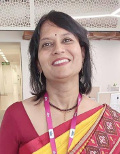
Soma Pandey
Jio Platforms Ltd, Bengaluru, India

Alok Ranjan
Bosch, India




